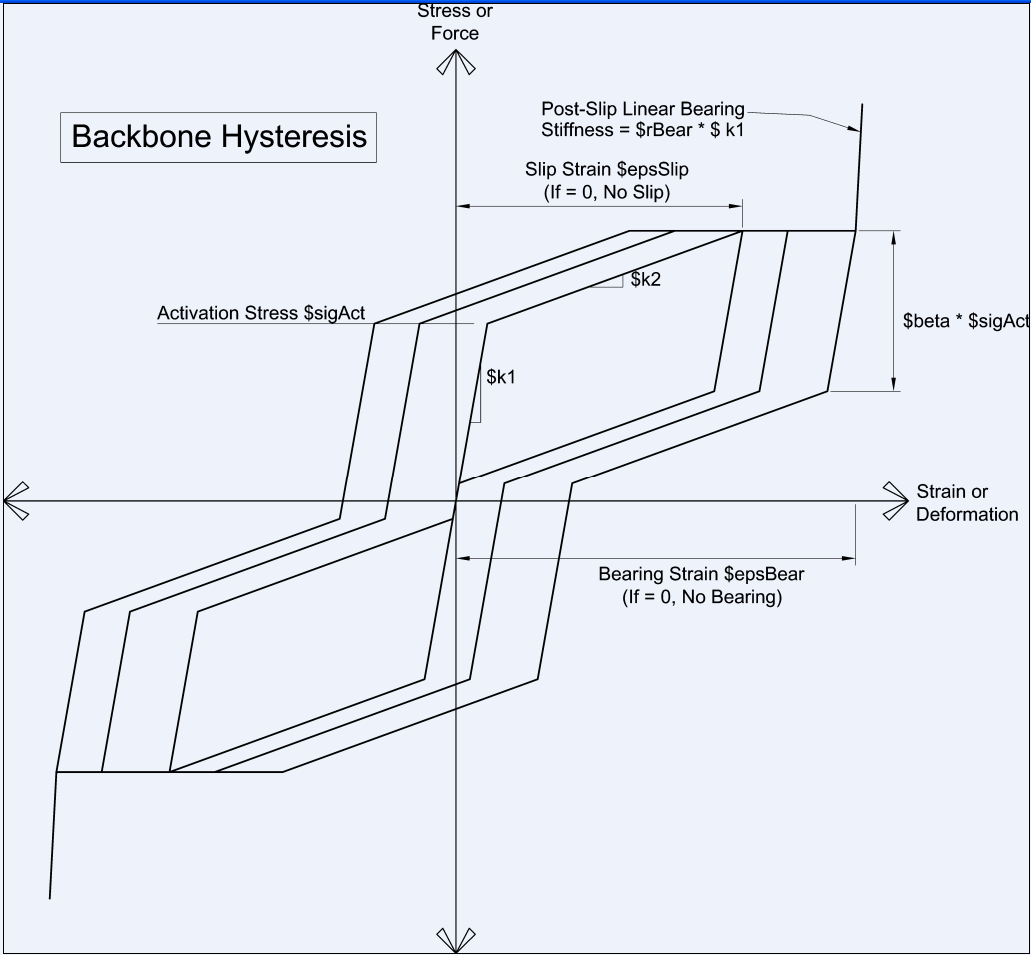Contact Authors: |
Jeff Erochko: erochko@ecf.utoronto.ca |
This command is used to construct a uniaxial self-centering (flag-shaped) material object with optional non-recoverable slip behaviour and an optional stiffness increase at high strains (bearing behaviour).
This material is primarily used to model a self-centering energy-dissipative (SCED) brace (Christopoulos et al., 2008) with the option to model the slippage of an external friction fuse (which causes non-recoverable deformation above a given brace strain). In practice, the external friction fuse is used to limit the amount of force in the brace (since the post-activation stiffness is generally non-zero). The bearing option is used to approximately model the effect of bolt bearing in the brace or external fuse mechanisms, which causes a steep increase in the stiffness of the brace. For self-centering energy-dissipative brace design, this bearing effect model may be used to impose a limit on slip or activation strain based on the anticipated available strain capacity of the mechanism. Note that this bearing effect is only intended to be a flag to indicate the existence of bearing; the SCED brace system should be designed such that the brace will not experience such bearing in practice.
This material type could potentially be used for any comparable self-centering system that exhibits a flag-shaped hysteretic response (for example: rocking wall systems if the uniaxial material is used as a moment/rotation hysteresis).
uniaxialMaterial SelfCentering $matTag $k1 $k2 $sigAct $beta <$epsSlip> <epsBear> <rBear>
$matTag |
unique material object integer tag |
$k1 |
Initial Stiffness |
$k2 |
Post-Activation Stiffness (0<$k2<$k1) |
$sigAct |
Forward Activation Stress/Force |
$beta |
Ratio of Forward to Reverse Activation Stress/Force |
$epsSlip |
Slip Strain/Deformation (if $epsSlip = 0, there will be no slippage) |
$epsBear |
Bearing Strain/Deformation (if $epsBear = 0, there will be no bearing) |
$rBear |
Ratio of Bearing Stiffness to Initial Stiffness $k1 |

Figure 1: General Backbone Hysteresis showing Parameters
|
|
|
|
|
|
Figure 2: Example Hysteretic Responses
References:
Christopoulos, C., Tremblay, R., Kim, H.-J., and Lacerte, M. (2008). "Self-Centering Energy Dissipative Bracing System for the Seismic Resistance of Structures: Development and Validation" Journal of Structural Engineering ASCE, 134(1), 96-107.
Tremblay, R., Lacerte, M., and Christopoulos, C. (2008). "Seismic Response of Multistory Buildings with Self-Centering Energy Dissipative Steel Braces" Journal of Structural Engineering ASCE, 134(1), 108-120.